Types of Agave Plants
Agave plants are a group of succulent plants known for their striking rosette shapes and spiky leaves. There are many different types of agave species, each with its own unique look, growth habits, and uses. Some are used in gardens for their bold form, while others are famous for making syrup, tequila, or mezcal.
You can find agaves in a range of sizes, from small, compact plants to larger types that reach several feet across. Many are drought-tolerant, which makes them easy to care for in dry and sunny places. Some of the most popular varieties include Agave americana, Agave tequilana, and Agave parryi.
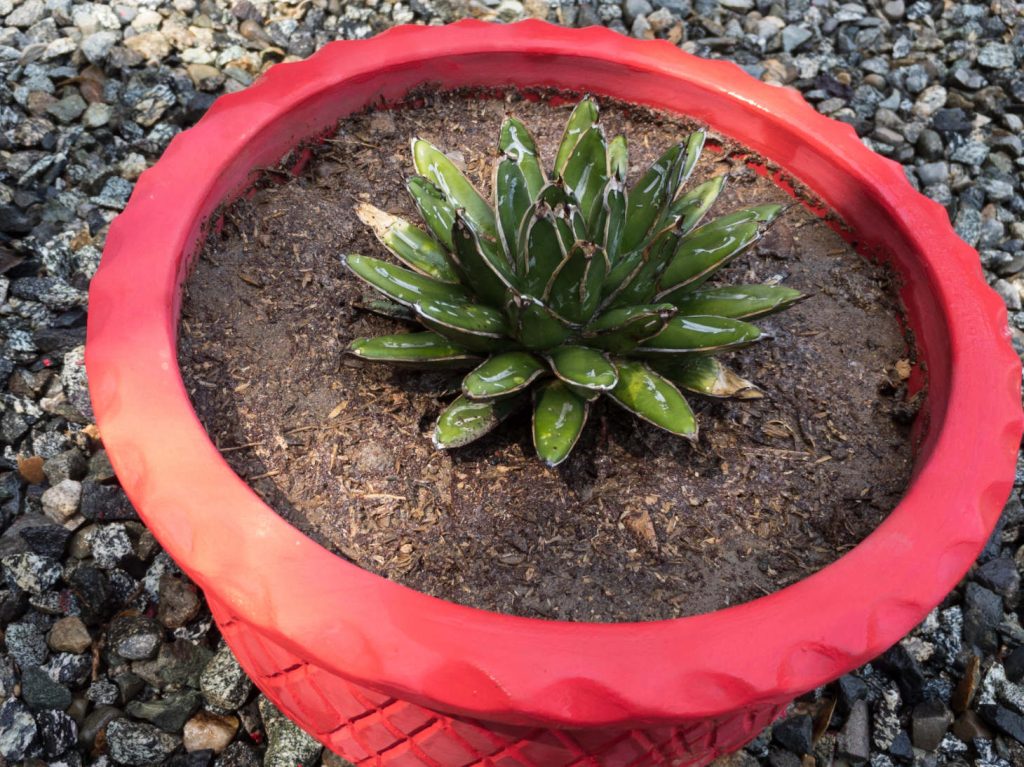
Key Takeaways
- Agaves are unique succulents with many different species.
- Some agave types are known for special uses and appearances.
- They are easy to care for and grow well in many home gardens.
Major Types of Agave Plants
Agave plants come in many forms, shapes, and sizes, often with dramatic leaves and bold rosettes. Many types are valued in landscaping for their drought tolerance, unique appearance, and ability to thrive in hot, dry climates like those in Mexico, Arizona, and Southern California.
Agave americana
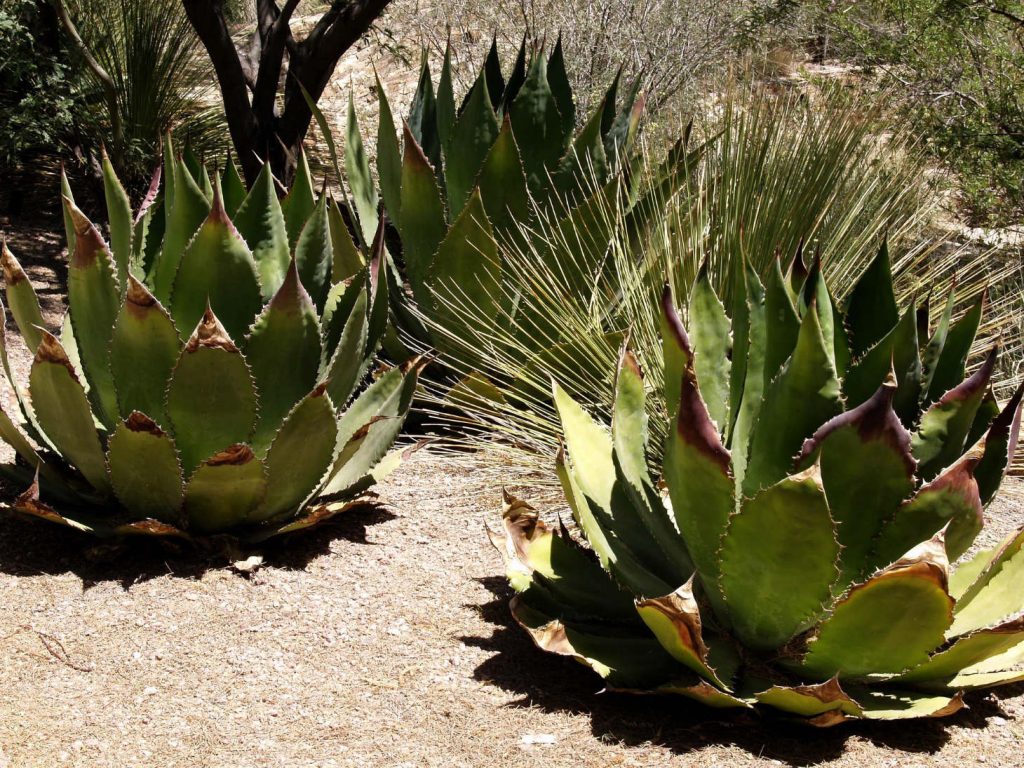
Agave americana is often called the “century plant.” Despite the name, it usually lives between 10 and 30 years. This species is native to Mexico and is also common in the southwestern United States.
You can recognize Agave americana by its large, blue-green leaves that curve outward and have sharp spines along the edges and at the tip. It is one of the largest agave species, sometimes growing over 6 feet tall and wide.
This plant is popular in desert botanical gardens and for large landscaping projects because of its size and dramatic look. While it is drought-tolerant, you should be careful when planting it near walkways because of its sharp spines.
Agave americana only blooms once at the end of its life, producing a tall flowering stalk that can reach up to 20 feet. After flowering, the main plant dies, but it can leave behind small “pups” or offsets around its base.
Agave parryi

Agave parryi, sometimes known as Parry’s agave, is a cold-hardy species that grows well in areas like Arizona. It is smaller than Agave americana, typically reaching 2 to 3 feet in height and width.
The leaves are broad, short, and grayish-blue, forming a tight rosette. Each leaf ends in a strong spine, but the edges are less sharply toothed than other large agaves. These features make Agave parryi a good choice for gardens where space is limited or where winter weather is a concern.
Parry’s agave is often found in rocky mountain slopes and is valued for its ability to handle cold, drought, and even some snow. It grows slowly but can live for many years. When mature, it sends up a tall flower stalk, after which the main plant will die, but smaller plants may grow from the base.
Agave victoriae-reginae

Agave victoriae-reginae, also called Queen Victoria agave, is prized for its compact size and striking white lines on green, stiff leaves. This species is well-suited for small gardens, containers, or rock gardens.
It usually grows to about 1 foot tall and 1-2 feet wide, forming a dense, almost spherical rosette. The leaves are stiff, angular, and end in a single spine, and typically lacks prominent teeth, though some varieties may have small teeth along the margins.
Queen Victoria agave is native to Mexico and is often seen in desert botanical gardens because of its neat shape and strong drought tolerance. Its slow growth and compact nature make it a favorite for collectors and anyone wanting a low-maintenance centerpiece.
Flowering happens only once, with a tall spike covered in small flowers. After blooming, the plant will usually die, but offsets sometimes appear around the base.
Agave attenuata
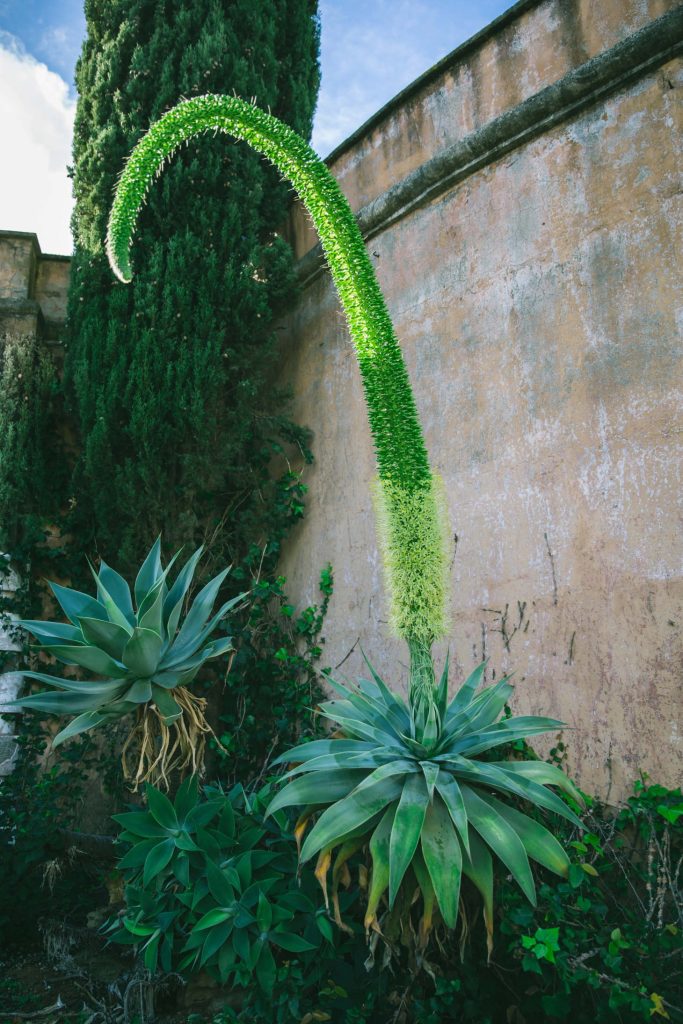
Agave attenuata, sometimes called Foxtail Agave, stands out for its soft, smooth leaves that curve gracefully and contain no spines, making it safer around walking paths and patios.
This species is smaller, growing about 3-6 feet tall and 5-10 feet wide. The soft, pale green leaves form a loose rosette. It is popular in landscaping across Southern California and Arizona, often used for its gentle look and adaptability.
Foxtail Agave is not as cold-hardy as Agave parryi, preferring milder climates. Its most recognizable feature is its curved, arching flower stalk that resembles a foxtail, which can appear after many years.
After flowering, the main plant will die, but it reliably produces groups of offsets or “pups,” making it easy to replant and spread in your garden. It needs well-drained soil and prefers some protection from harsh afternoon sun.
Unique and Notable Agave Species
Some agave species stand out for their distinctive shapes, hardiness, and attractive textures. These species are valued for landscaping, container gardening, and their unique adaptations to different environments.
Agave bracteosa
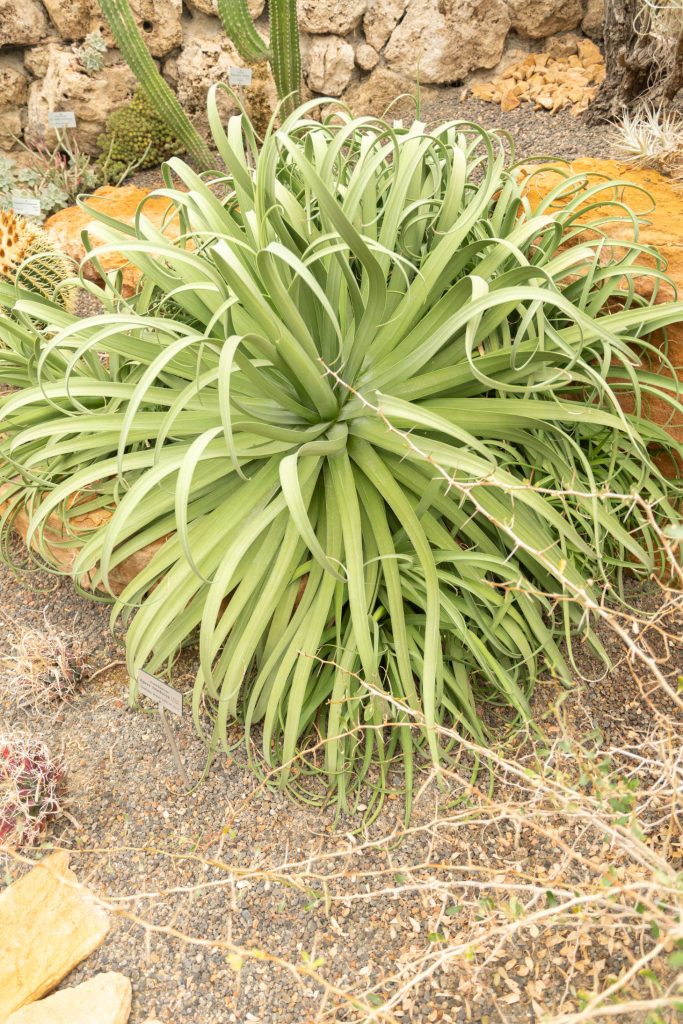
Agave bracteosa, also known as spider agave, has long, slender, and flexible leaves. The leaves often curve and twist, giving the plant a delicate look compared to most agaves. The leaf tips are soft and do not have sharp spines, making it a good option if you want a non-threatening agave for your garden.
This species is native to northeastern Mexico and is drought-tolerant. It can handle both sun and shade. Agave bracteosa usually forms clumps as it grows and may reach up to 3 feet tall and wide, particularly in the ‘Octopussy’ variety.
It is mostly monocarpic. The main rosette dies after its single flowering, but the plant often survives through offsets.
Because of its softer leaves and manageable size, it is often chosen for small gardens and container displays.
Some related species, like Agave parviflora and Agave geminiflora, share bracteosa’s narrow-leafed look but may have finer white fibers along the leaf edges.
Agave vilmoriniana

Agave vilmoriniana, called the octopus agave, has leaves that arch and twist in a way that resembles an octopus. The leaves light green to bluish-green and have smooth margins with soft terminal spines. It grows quickly and often reaches 3 to 4 feet in height and can spread to 6 to 8 feet in width.
This species thrives in warmer climates and needs well-draining soil. It sends up a tall flowering spike when it blooms, after which the main plant dies.
Agave vilmoriniana is popular in modern landscaping for its striking, sculptural appearance. If you like unusual shapes, this species is a standout, especially in rock gardens or as a centerpiece.
Other members of the agave family with similar dramatic forms include Agave desmettiana, which has dark blue-green leaves that form a rosette shape, with a smooth texture and a single reddish sharp terminal spine, and Agave guiengola, which is known for its thick, wide leaves.
Agave filifera
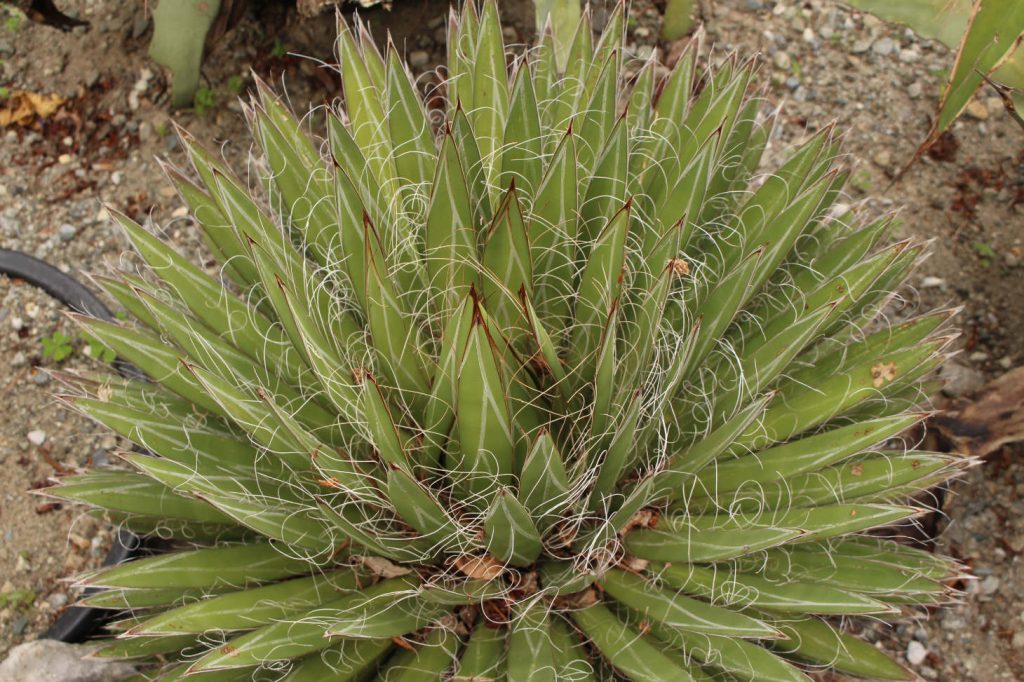
Agave filifera is known for the thin, white threads or fibers (called filifera) that curl off the edges of its leaves.
The leaves are dark green and stiff, edged with the curling fibers that give this plant its name.
Agave filifera usually grows in a tidy rosette up to 3 feet across. New offsets form at the plant’s base. The plant is very drought-tolerant and prefers full sun or partial shade.
The flower spike is tall and crowded with small yellowish-green to dark purple blooms. After flowering, the main rosette dies, but the offsets continue to grow.
Agave filifera is a strong choice if you want a plant with unique leaf decorations.
Other agaves with fibrous leaves include Agave lechuguilla and Agave weberi, both known for their toughness and fiber production.
Agave desmettiana
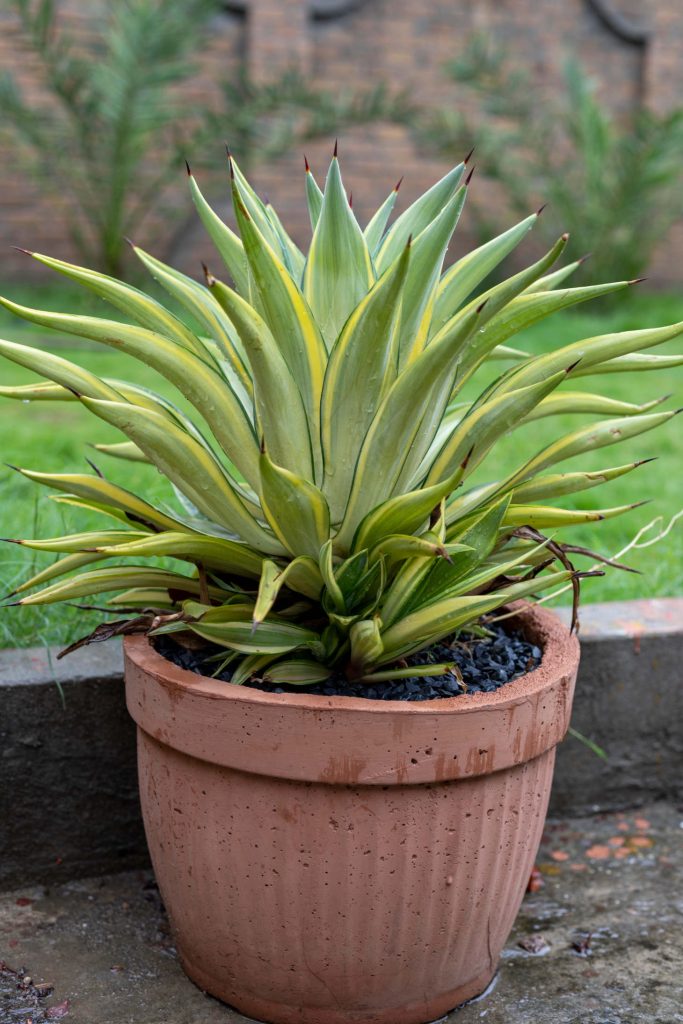
Agave desmettiana, sometimes referred to as smooth agave, has attractive, upright leaves that are bluish-green to yellowish or medium green.
The leaves are broad, slightly arched, and have only small spines at the tips, making them less hazardous than other agaves.
This species grows quickly and can reach up to 3 feet tall and 4 feet wide. It works well in containers as well as in landscapes. Agave desmettiana blooms after 10 to 30 years, sending up a flower stalk that can reach 10 feet tall.
Its adaptability to various soil types and short time to maturity make it popular in gardens.
It has some similarities to Agave mitis, which also have softer leaves and are chosen for their ornamental value.
Agave desmettiana also produces many offsets, or “pups,” making it easy to propagate and share with others.

